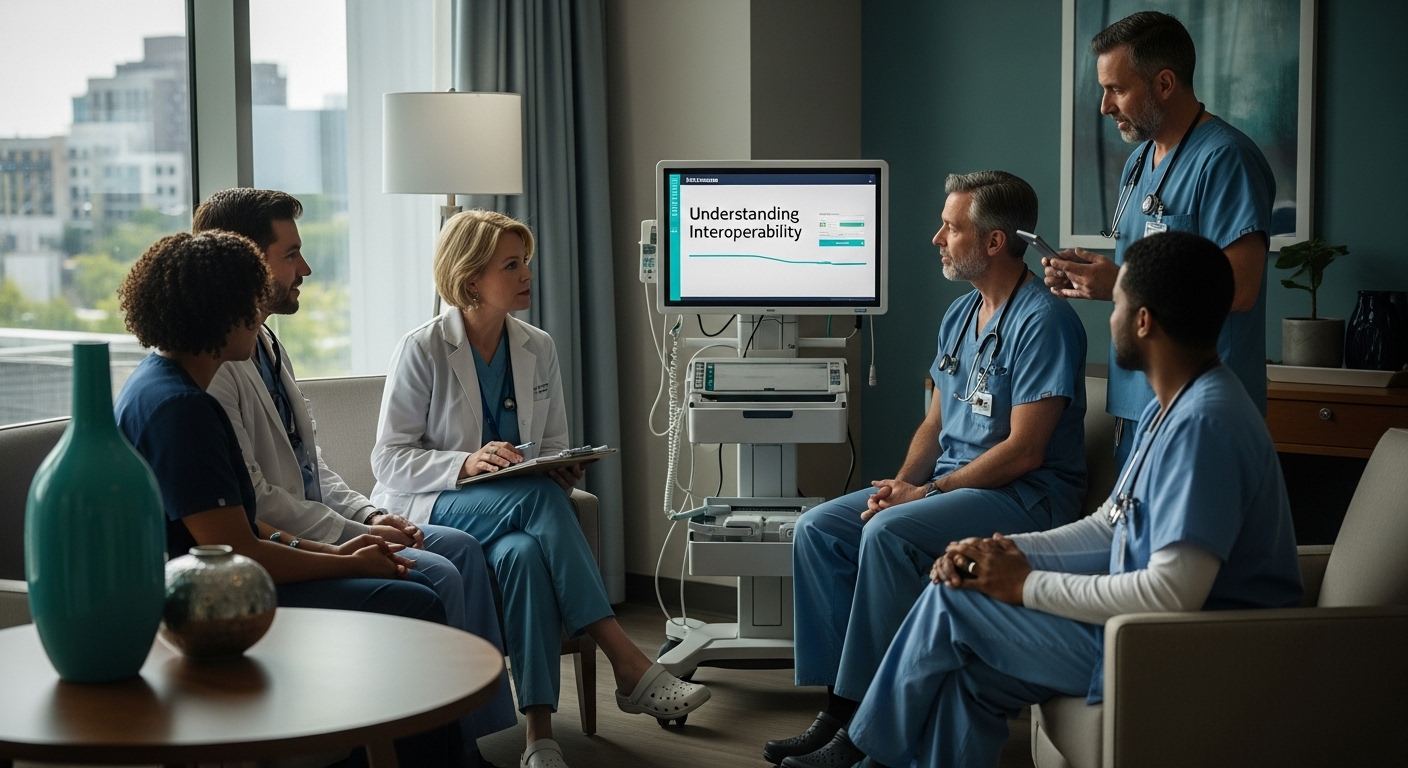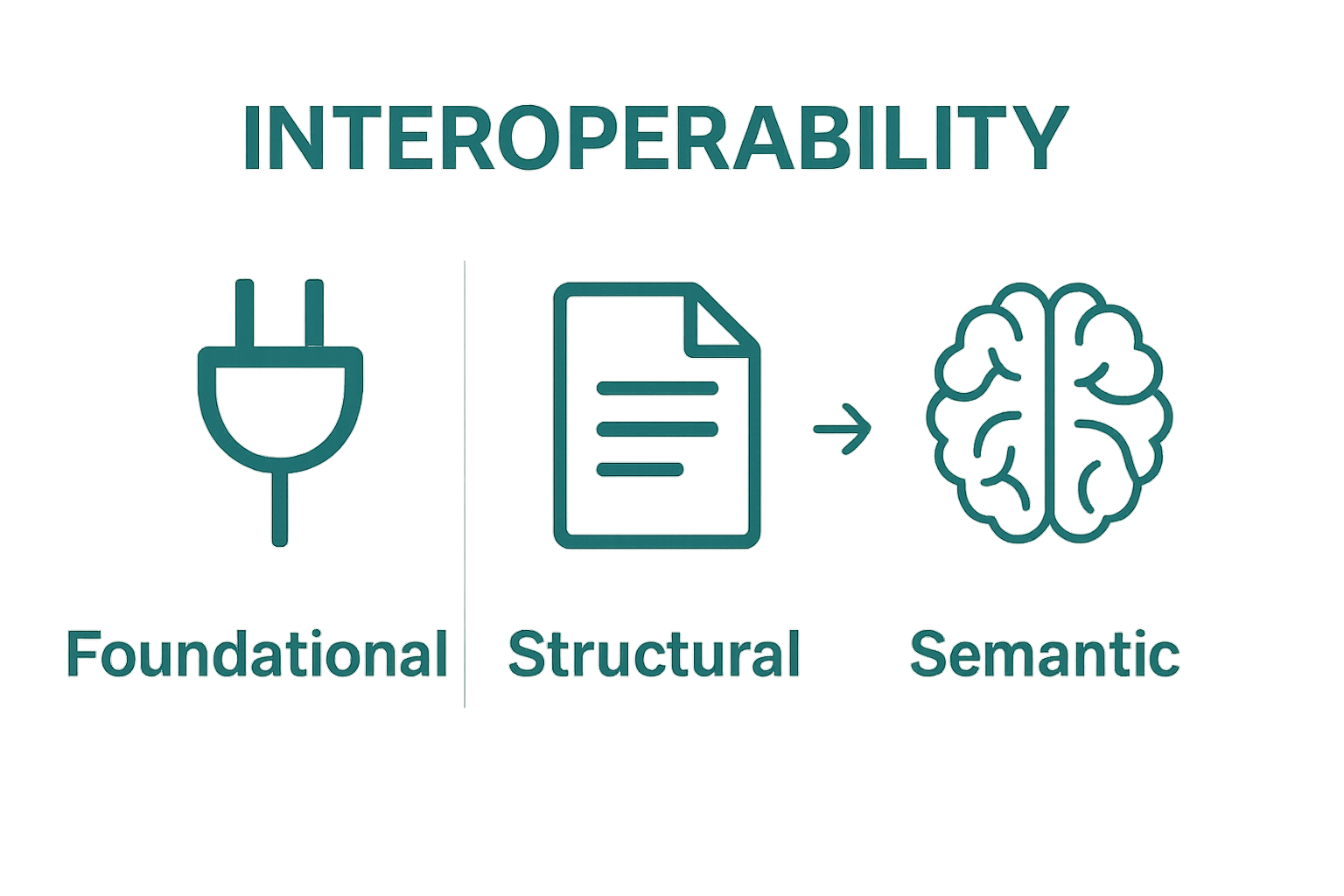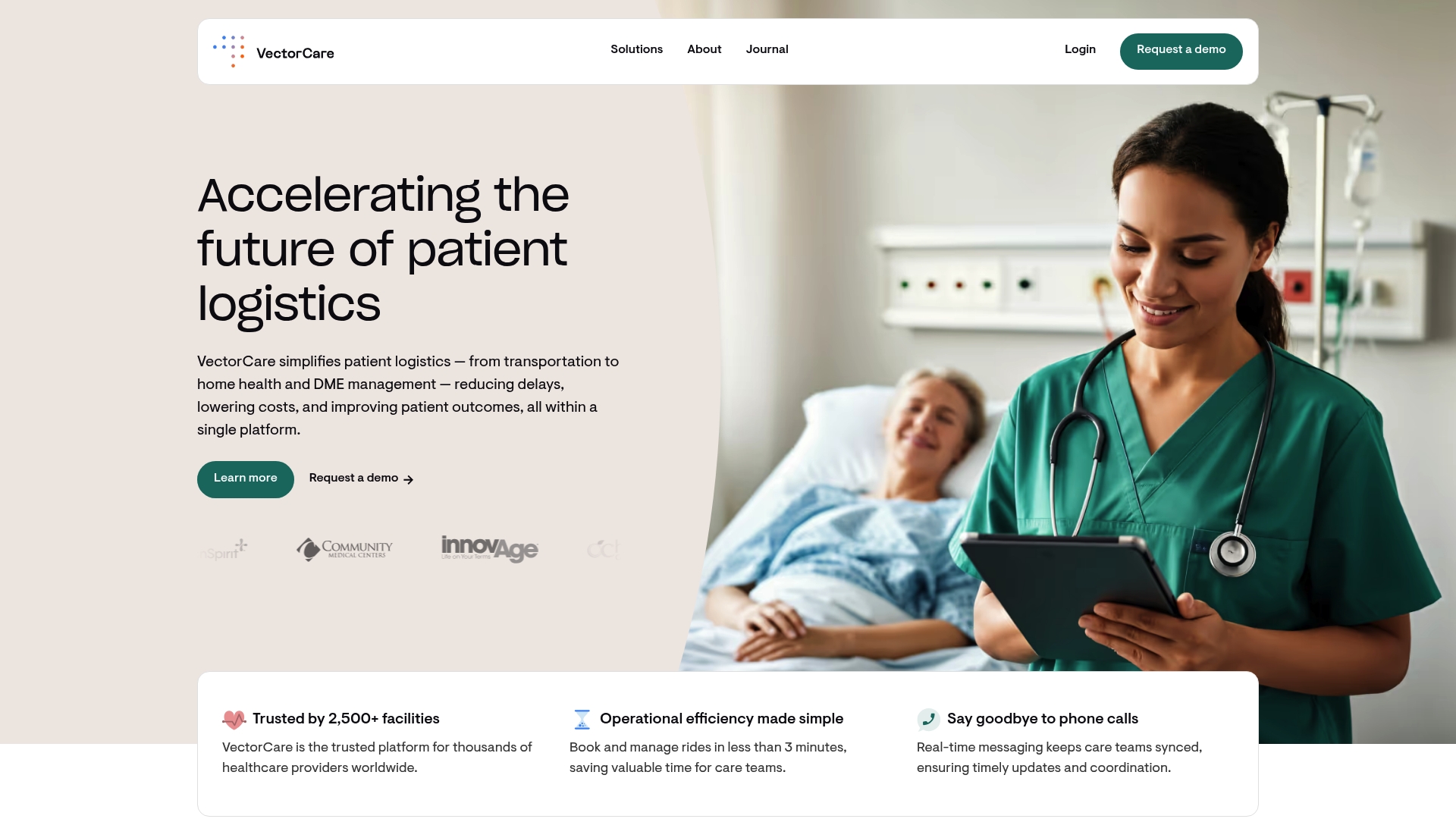Understanding Interoperability in Healthcare Systems

Healthcare systems are packed with all kinds of technology, but many of them still struggle to share patient information smoothly. What might surprise you is that over 70 percent of healthcare organizations say their data cannot flow freely across systems, causing slowdowns and missed details. The real shock is that true interoperability is not just about moving data from point A to point B. It is about making sure every system actually understands and uses the information correctly so nothing slips through the cracks.
Table of Contents
- Defining Interoperability In Healthcare Systems
- The Importance Of Interoperability For Patient Care
- How Interoperability Functions Among Healthcare Entities
- Key Concepts Behind Interoperability Standards
- Real-World Applications Of Interoperability
Quick Summary
| Takeaway | Explanation |
|---|---|
| Interoperability is essential for patient care. | It allows seamless communication among healthcare systems, improving treatment quality and patient safety. |
| Improved clinical decisions from comprehensive data. | Access to complete patient histories enables more informed diagnoses and personalized treatment plans. |
| Interoperable systems reduce medical errors. | Ensuring accurate information sharing minimizes risks associated with fragmented health records and miscommunications. |
| Interoperability supports efficient healthcare delivery. | It enhances coordination among providers, leading to reduced administrative overhead and better resource allocation. |
| Robust regulatory compliance safeguards data. | Effective interoperability must adhere to strict security protocols, ensuring patient information privacy while facilitating data exchange. |
Defining Interoperability in Healthcare Systems
Interoperability in healthcare systems represents a critical technological capability that enables seamless communication and data exchange across diverse medical platforms and organizations. At its core, interoperability allows different healthcare information technology (HIT) systems to connect, share, and effectively use digital health information without special effort from end users.
Below is a comparison table summarizing the three key components of interoperability in healthcare systems, clarifying their distinct purposes and roles.
| Component | Description |
|---|---|
| Foundational Interoperability | Enables basic data exchange capability between different healthcare systems |
| Structural Interoperability | Ensures standardized format and syntax so that exchanged data can be accurately interpreted |
| Semantic Interoperability | Guarantees the clinical meaning of data is preserved and fully understood during exchange |

The Fundamental Components of Interoperability
Interoperability is not merely about transferring data between systems but ensuring that transferred information maintains its clinical and operational meaning. Research from the National Center for Biotechnology Information highlights that true interoperability encompasses several key dimensions:
- Foundational Interoperability: Basic data exchange capability between systems
- Structural Interoperability: Standardized format and syntax for data interpretation
- Semantic Interoperability: Comprehensive understanding of exchanged medical information
Why Interoperability Matters in Modern Healthcare
Healthcare organizations increasingly recognize interoperability as a strategic imperative. By enabling smooth information flow, providers can make more informed decisions, reduce medical errors, and enhance patient care coordination. When systems communicate effectively, healthcare professionals gain access to comprehensive patient histories, diagnostic information, and treatment protocols in real time.
The impact extends beyond individual patient interactions. Interoperable systems support broader public health initiatives, research collaborations, and more efficient healthcare resource allocation. Read more about how VectorCare addresses communication challenges in complex healthcare environments.
Key benefits of robust interoperability include:
- Reduced administrative overhead
- Enhanced patient safety
- More accurate and timely medical diagnoses
- Improved care coordination across multiple providers
As healthcare technology continues evolving, interoperability will remain a critical foundation for delivering sophisticated, patient centered medical services.
The Importance of Interoperability for Patient Care
Interoperability serves as a critical backbone for modern patient care, transforming how healthcare providers deliver comprehensive and efficient medical services. By enabling seamless information exchange, interoperability directly impacts patient safety, treatment quality, and overall healthcare outcomes.
Enhanced Clinical Decision Making
Comprehensive patient information is essential for accurate medical decisions. Research from the National Institutes of Health demonstrates that fragmented health records can significantly increase risks of medical errors and treatment complications. When healthcare systems communicate effectively, providers gain access to complete patient histories, enabling more informed diagnostic and treatment strategies.
Key advantages of comprehensive information access include:
- Reducing duplicate medical tests
- Minimizing potential medication interaction risks
- Providing more personalized treatment approaches
- Supporting faster emergency medical interventions
Patient Safety and Continuity of Care
Interoperable healthcare systems create a holistic view of patient health across different medical environments. This continuous information flow is crucial when patients transition between healthcare settings such as hospitals, clinics, and specialized care facilities. Learn more about modernizing healthcare communication and its impact on patient experiences.
By eliminating information silos, healthcare providers can:

- Track patient progress more accurately
- Coordinate complex treatment plans
- Ensure consistent medical guidance
- Reduce communication gaps between specialists
Long Term Healthcare Transformation
Interoperability represents more than a technological upgrade. It is a fundamental shift towards patient centered healthcare delivery. As medical technologies become increasingly complex, the ability to share and understand information across diverse systems will become a critical differentiator in healthcare quality and efficiency.
Healthcare organizations that prioritize interoperability are positioning themselves at the forefront of medical innovation, creating more responsive, accurate, and patient focused care ecosystems.
How Interoperability Functions Among Healthcare Entities
Interoperability is not a single technology but a complex ecosystem of communication protocols, data standards, and collaborative frameworks that enable seamless information exchange across diverse healthcare organizations. These interconnected systems transform how medical entities share critical patient information and collaborate in delivering comprehensive care.
Technical Foundations of Information Exchange
Healthcare information exchange relies on sophisticated technical standards that ensure data can be accurately transmitted and understood. According to the Healthcare Information and Management Systems Society, healthcare entities utilize several key technological mechanisms:
- Health Information Exchanges (HIEs): Centralized platforms enabling secure data sharing
- Application Programming Interfaces (APIs): Technical connectors allowing different software systems to communicate
- Standard Communication Protocols: Standardized data formats like HL7 and FHIR
Collaborative Workflows and Data Sharing
Interoperable systems create dynamic networks where hospitals, clinics, laboratories, and insurance providers can instantaneously share relevant patient information. This interconnectedness supports more coordinated and efficient healthcare delivery. Learn more about modernizing patient logistics systems and their role in healthcare communication.
Key collaborative advantages include:
- Real time patient data updates
- Streamlined referral processes
- Enhanced cross institutional care coordination
- Reduced administrative redundancies
Regulatory and Security Considerations
Effective interoperability requires robust security protocols and compliance with healthcare privacy regulations like HIPAA. Healthcare entities must implement sophisticated encryption, access controls, and audit mechanisms to protect sensitive patient information while facilitating necessary data exchanges.
By developing standardized, secure communication frameworks, healthcare organizations can create more responsive, patient centered care ecosystems that prioritize both information accessibility and individual privacy.
Key Concepts Behind Interoperability Standards
Interoperability standards form the critical infrastructure that enables seamless communication across complex healthcare technology ecosystems. These technical frameworks provide the essential rules, protocols, and guidelines that allow diverse medical systems to exchange, interpret, and utilize information effectively and securely.
The following table organizes foundational healthcare communication standards, highlighting their primary function and the type of health information they facilitate.
| Standard | Main Purpose | Type of Data Exchanged |
|---|---|---|
| Health Level Seven (HL7) | International data transfer standard | Patient administrative, clinical, and billing data |
| Fast Healthcare Interoperability Resources (FHIR) | Web-based real-time data sharing | Various electronic health records (EHR), structured data |
| Digital Imaging and Communications in Medicine (DICOM) | Imaging data management and transfer | Radiology and medical imaging data |
Foundational Communication Standards
Healthcare communication standards establish a universal language for digital health information exchange. Research from the National Library of Medicine reveals that these standards are crucial for creating consistent, meaningful data interactions across different technological platforms.
Key communication standards include:
- Health Level Seven (HL7): A set of international standards for patient data transfer
- Fast Healthcare Interoperability Resources (FHIR): Modern web based standard for electronic health information exchange
- Digital Imaging and Communications in Medicine (DICOM): Standard for handling medical imaging data
Technical Specification and Data Modeling
Standards go beyond simple data transmission, encompassing comprehensive specifications that ensure data maintains its clinical meaning and integrity during transfer. These technical specifications define precise data formats, vocabulary, and structural requirements. Learn more about modernizing healthcare communication technologies and their impact on healthcare delivery.
Critical technical specification aspects include:
- Consistent data representation
- Uniform terminology definitions
- Structured message formats
- Secure transmission protocols
Governance and Compliance Framework
Interoperability standards are not just technical guidelines but also represent a comprehensive governance framework. They ensure that healthcare organizations maintain high levels of data privacy, security, and regulatory compliance while facilitating necessary information sharing.
By establishing clear, rigorous standards, healthcare systems can create robust, transparent, and trustworthy communication networks that prioritize patient safety and data integrity.
Real-World Applications of Interoperability
Interoperability transcends theoretical concepts, delivering tangible benefits across various healthcare domains. By enabling seamless information exchange, these technologies transform how medical professionals diagnose, treat, and manage patient care across complex healthcare environments.
Emergency Medical Services and Urgent Care
Critical medical scenarios demand instantaneous, accurate information sharing. Research from the Journal of Medical Internet Research demonstrates how interoperable systems dramatically improve emergency response and patient outcomes. When ambulance services, emergency departments, and specialty care centers can instantly share patient data, medical professionals can make faster, more informed decisions.
Key emergency care interoperability benefits include:
- Rapid access to patient medical histories
- Immediate transmission of vital sign data
- Streamlined patient handoff procedures
- Reduced time between initial contact and specialized treatment
Chronic Disease Management and Preventive Care
Interoperable systems enable comprehensive patient monitoring and proactive healthcare interventions. Healthcare providers can track patient progress, monitor treatment effectiveness, and identify potential health risks through integrated data platforms. Learn more about patient logistics for public health agencies and their innovative approaches to coordinated care.
Significant advantages in chronic disease management include:
- Continuous patient health tracking
- Enhanced medication management
- Early detection of potential health complications
- Personalized treatment plan adjustments
Research and Public Health Initiatives
Interoperability plays a crucial role in advancing medical research and supporting large scale public health strategies. By aggregating anonymized patient data from diverse healthcare systems, researchers can identify broader health trends, track disease progression, and develop more effective treatment protocols.
Through sophisticated data sharing mechanisms, healthcare organizations can transform individual patient interactions into valuable insights that benefit entire populations, ultimately driving medical innovation and improving community health outcomes.
Transform Interoperability Into Real World Results With VectorCare
Are you feeling overwhelmed by fragmented patient information and the constant struggle to coordinate care across different healthcare systems? The article on interoperability highlights how disconnected data, manual processes, and communication gaps put patient safety and care quality at risk. When information does not flow smoothly, your team must work harder, delays increase, and critical patient outcomes can suffer.
With VectorCare, you can turn interoperability from a challenge into your strongest advantage. Our platform is built to bridge gaps between providers, payers, emergency services, and health agencies—making sure the right information is delivered to the right people in real time. From secure data exchange and automated dispatching to real time notifications and no code workflows, VectorCare brings practical interoperability to your daily operations. See how we help modernize healthcare communication and discover how your organization can work smarter, not harder.

Get ahead of patient logistics challenges now. Visit VectorCare’s platform overview to schedule a demo or connect with our team. Start experiencing the data-driven coordination and efficiency your patients deserve.
Frequently Asked Questions
What is interoperability in healthcare systems?
Interoperability in healthcare systems refers to the ability of different healthcare information technology systems to communicate, share, and utilize health information seamlessly without requiring special efforts from users.
Why is interoperability important in modern healthcare?
Interoperability is crucial because it enables efficient communication among healthcare providers, leading to informed decision-making, reduced medical errors, improved patient care coordination, and enhanced public health initiatives.
What are the key components of interoperability?
The fundamental components of interoperability include foundational interoperability (basic data exchange), structural interoperability (standardized data formats), and semantic interoperability (ensuring clinical meaning is preserved during data exchange).
How does interoperability support patient safety?
Interoperability enhances patient safety by providing healthcare providers with comprehensive patient histories and real-time data access, reducing the risk of duplicate tests, medication interactions, and facilitating better-informed clinical decisions.
Recommended
- Legacy Systems And The Impact on Patient Logistics and Care – VectorCare
- 5 Reasons to Improve Healthcare Dispatching – VectorCare
- Becker’s Healthcare Report: How VectorCare Solves Communication Gaps in Patient Transfers – VectorCare
- The Patient’s Journey Podcast: Melanie Combs-Dyer – VectorCare
- Overcoming Integration Challenges - Digital Insurance Platform | IBSuite Insurance Software | Modern Insurance System



